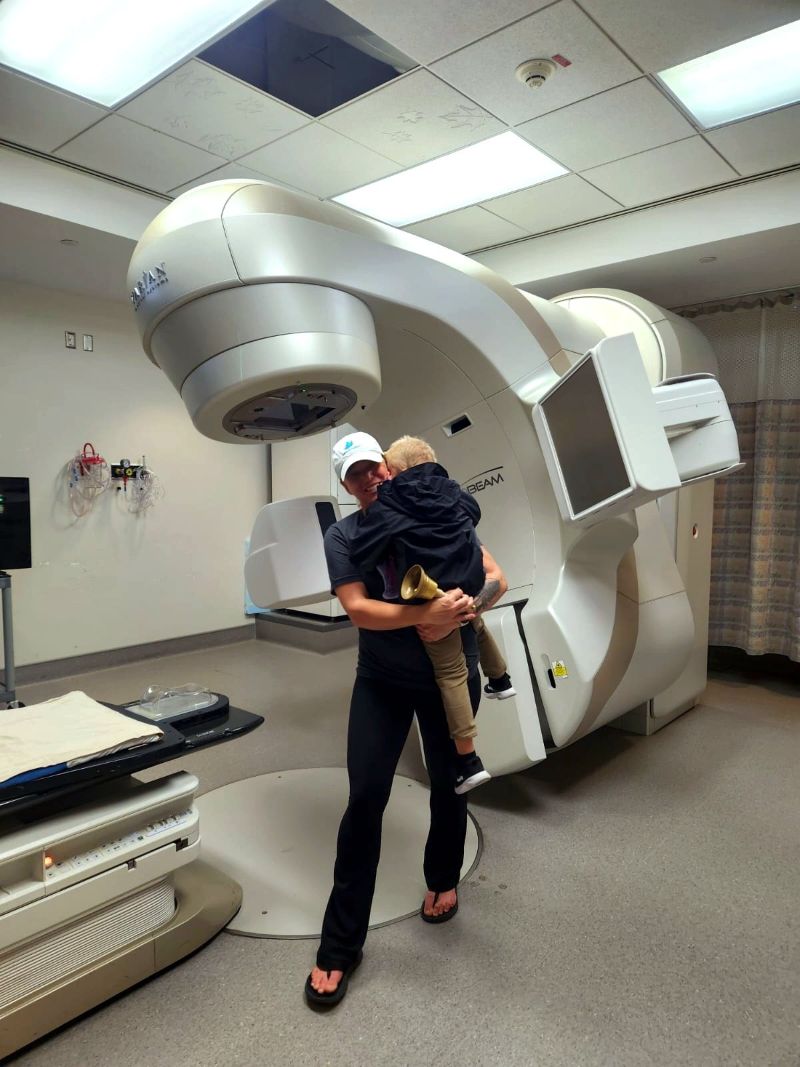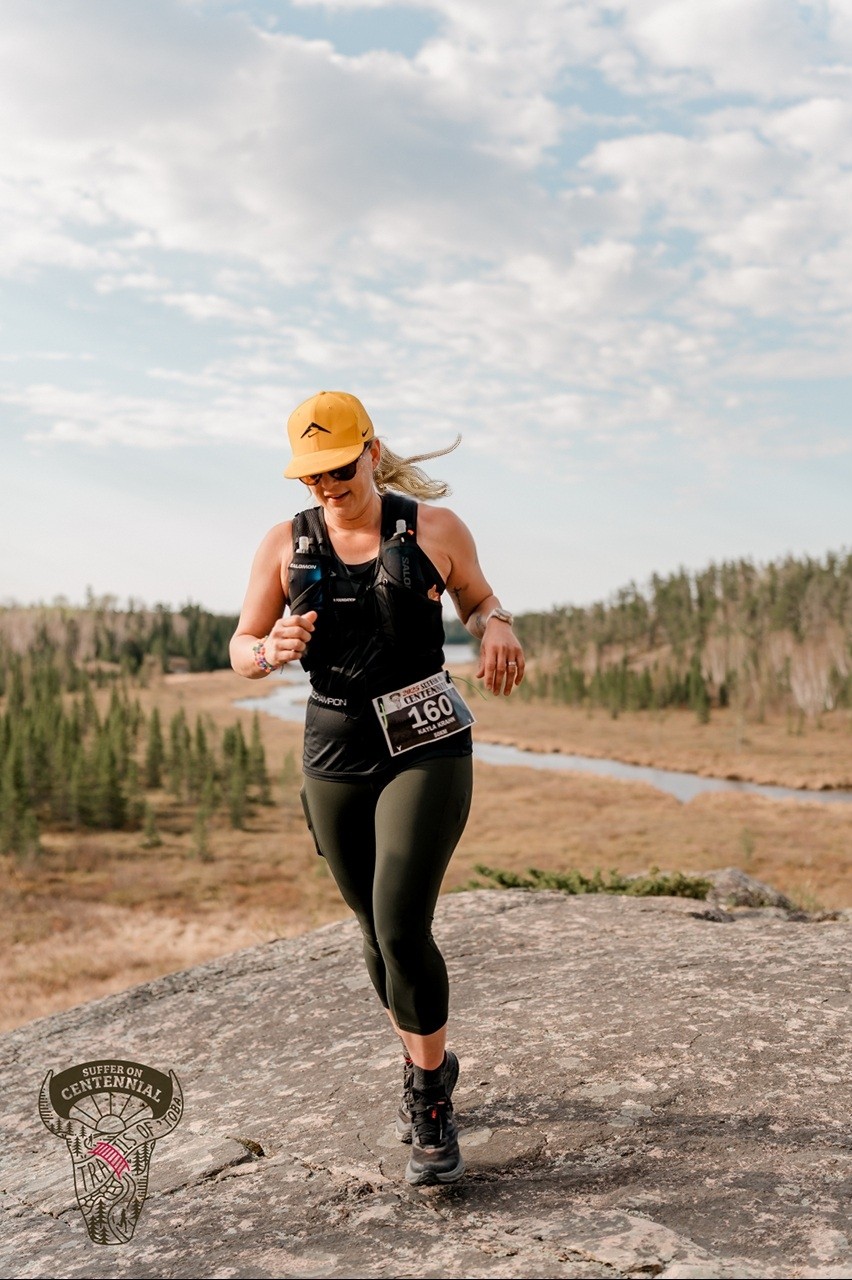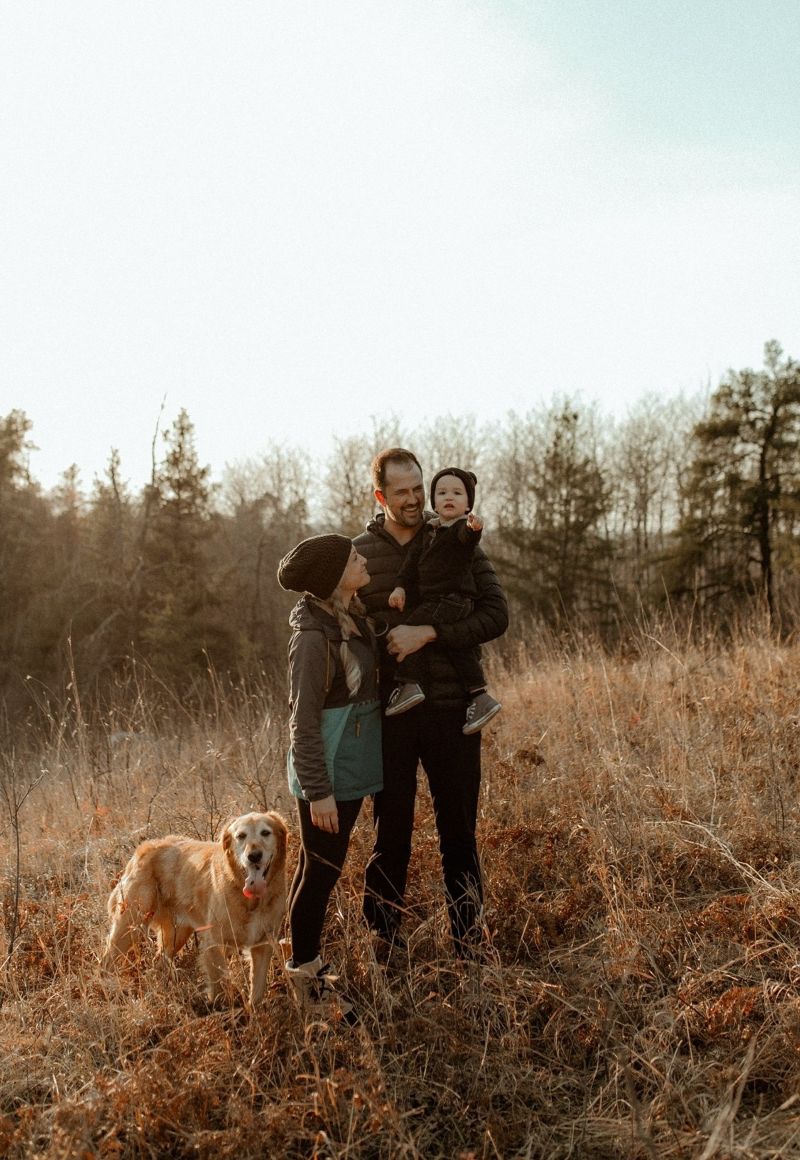
Running through it
Kayla Krahn has just returned from a run, her four-year-old son, Ben, energetically jumping behind her. Healthy and active, Kayla is also a brain tumour survivor, having had her life turned upside down only a few short years ago.
“I remember the day to a T,” she says, of the day she learned something was seriously wrong.
It was July 8, 2022, when telecom provider Rogers Communications experienced a major service outage across the country.
“Phones weren’t working, emails weren’t working, and people were freaking out,” she recalls. “It was that day I went to my optometrist, because for two weeks I’d been having migraines with an aura and my vision was getting worse every day. I also experienced numbness on my right side.”
Until that point, she’d excused it away.
“I chalked it up to being a tired mom,” she says. “There was also a heat wave at the time and migraines ran in my family, so I didn’t think much of it.”
The waiting game
 Kayla’s mom urged her to see an optometrist because of her vision troubles. Thankfully, the optometrist had a cancellation and could fit Kayla in right away.
Kayla’s mom urged her to see an optometrist because of her vision troubles. Thankfully, the optometrist had a cancellation and could fit Kayla in right away.
The optometrist noticed severe swelling of Kayla’s optic nerve and sent her to see an ophthalmologist. Kayla, from Steinbach, Man., drove an hour to Winnipeg, where the ophthalmologist stayed late to see her.
“That’s when I knew it was bad,” she says.
The ophthalmologist, in turn, told Kayla she’d need to see a neurologist. As it was a Friday evening, Kayla was instructed to head to the emergency department of Winnipeg’s Health Sciences Centre first thing the next day.
“He said, ‘I’m sorry, but there’s going to be a wait, so come prepared,’” she recalls. “I brought a book and music and drove in by myself, which I should not have done but I did, because that’s my personality.”
Sure enough, Kayla waited all day, first seeing an emergency room doctor before being referred for a CT scan at 6 p.m. that evening. She was told she couldn’t go home, as the CT scan had revealed a large mass in her brain that was later revealed to be a low-grade ependymoma.
“A brain tumour wasn’t even on my radar,” she says. “To me, that just seemed super dramatic. And so, I was blindsided. I would say the rug was completely ripped out from under my feet.”
“I knew what I was in for”
That Monday, she had an MRI and met with the neurosurgeon who would be operating on her.
“When the doctor came in to go over everything with me, I kind of told him to skip over it,” she says. “It’s brain surgery and it’s a big tumour. I knew what I was in for.”
What she didn’t expect was the anxious anticipation of waiting five days for her surgery or the after-effects of her 12-hour craniotomy and total resection.
Being under anaesthesia for so long, combined with the heavy pain medication she was given post-surgery, had her experiencing ICU delirium. This condition is a sudden change in mental state that can lead to confusion, difficulty focusing, and cognitive impairment, with symptoms that fluctuate in severity.
“My family was worried about me,” she says. “They thought, ‘Is this who she is now?’”
Thankfully, Kayla says, this condition only lasted the five days she was hospitalized post-surgery, though she was given an anti-psychotic medication towards the end to help alleviate her symptoms. She remembers it vividly, saying it was the worst part of her experience.
Radiation and resilience
 She healed well and was back to her favourite pastime of running three months later. Unfortunately, in 2024, Kayla learned that her tumour had started to grow back. She went through 33 rounds of radiation, determined to keep running through her treatment.
She healed well and was back to her favourite pastime of running three months later. Unfortunately, in 2024, Kayla learned that her tumour had started to grow back. She went through 33 rounds of radiation, determined to keep running through her treatment.
“The oncologist warned me that the after-effects of radiation could hit me a bit later, but I thought, ‘It’s not so bad,” she says. “And then, it hit me later.”
She had to pause her running while she recovered, though she’s back at it now. In May 2024, she even completed the 50-km Suffer on Centennial run held by Trails of Toba.
“Running has become both my therapy and my act of resistance. It’s how I push back against the fear, the fatigue, and everything cancer tried to steal.”
Some days I run to feel strong,” she says. “Other days, I run just to feel normal again. Either way, it reminds me that I’m still here, still moving forward, one foot in front of the other.”
Getting back to life as she knows it
Kayla is not opposed to slowing it down for a good cause though, participating in past years’ Brain Tumour Walks and in this year’s Winnipeg Brain Tumour Walk, which she drove straight to from her most recent MRI.
She’s having MRIs every three months now and getting back to life as she knows it. She and her husband, Delmer, along with their son, Ben, like to spend time outdoors, camping and travelling. She also keeps busy caring for the family’s pets, who both have a link to her favourite movies.
Their cat is named Russell, for the little boy in the Disney movie, Up, while their golden retriever dog is one of her childhood dreams realized.
“Homeward Bound was my favourite movie growing up,” she says. “I always said that one day, when I was on my own, I would have a golden retriever.”
 “My husband tolerates him,” she continues, laughing, “but he’s my dog.”
“My husband tolerates him,” she continues, laughing, “but he’s my dog.”
Her saving grace
Her family has helped her push through the tough times, keeping her going even when she doesn’t want to.
“They’re my saving grace,” she says. “I have to get up. I have to move. I can’t just check out and lay in bed all day. I have my son to take care of. I have to let the dog out. It’s a lot of chaos, but in a good way.”
Kayla is also grateful for the friends she’s met along her brain tumour journey, who have supported her through her most challenging times. She’s met incredible friends through Brain Tumour Foundation of Canada, as well as through social media—even joining a messaging group called “BT girls.”
“It’s been lifesaving for me because before this, I didn’t know a single person who had a brain tumour,” Kayla says. “And now, I have so many friends with brain tumours.”
Kayla’s advice for anyone newly diagnosed is to put themselves out there and find others facing a similar battle.
“We all have a different story,” she says, “but we’re all connected.”